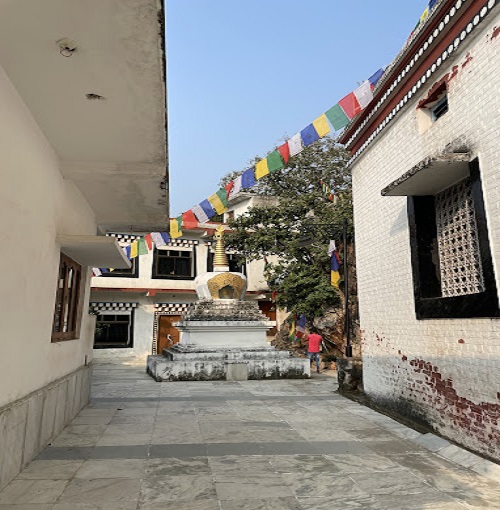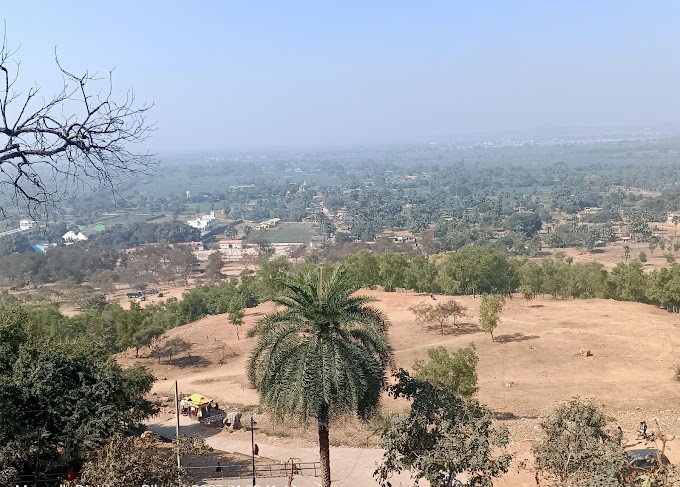Inside hill

Inside Dungeshwari Cave, near Gaya, a deep sense of peace welcomes every visitor. The cave is small and dimly lit, creating an atmosphere of calm and meditation. As you step in, the main attraction is a golden statue of Buddha, showing him in a very thin and emaciated form. This powerful image represents the years Prince Siddhartha spent practicing severe asceticism here before realizing the importance of balance in life. The walls of the cave are natural stone, rough and ancient, carrying the weight of centuries of prayers and meditation. Soft lamps and candles placed by monks and pilgrims light up the cave, adding a warm glow to the sacred space. Offerings of flowers, incense, and butter lamps fill the air with a sweet, calming fragrance. Next to the Buddhist shrine, there is also a small Hindu temple dedicated to Goddess Dungeshwari, symbolizing the unity of different faiths at this holy site. Monks often chant inside the cave, and visitors can sit quietly, feeling the deep spiritual energy that has been preserved here for over two thousand years. Visiting the inside of Dungeshwari Cave offers a chance to connect with history, faith, and the timeless search for inner peace.
Other Attractions
Besides the sacred caves, Dungeshwari Hill and its surroundings offer several other attractions. The peaceful environment itself is a major draw, with green hills and quiet paths perfect for meditation and reflection. Close to the caves is the **Dungeshwari Temple**, dedicated to Goddess Dungeshwari, where both Hindu and Buddhist pilgrims come to pray. Visitors often combine their trip with a visit to **Bodh Gaya**, just a short distance away. Bodh Gaya is home to the famous **Mahabodhi Temple**, a UNESCO World Heritage Site, where Lord Buddha attained enlightenment under the Bodhi tree. The **Sujata Temple** nearby honors the village girl who offered food to Siddhartha, helping him realize the Middle Path. Pilgrims and tourists also enjoy the peaceful rural setting, small local markets, and simple, welcoming monasteries run by monks from around the world. Together, these sites create a rich spiritual journey.

Distance From
Gaya Railway Station
Dungeshwari Hill is located about 12 kilometers from Gaya Railway Station.

Gaya Airport
Dungeshwari Hill is located about 17 kilometers from Gaya Airpot.

Gaya Bus Stand
Dungeshwari Hill is located about 13 kilometers from Gaya Railway Station,

Our Review
Dungeshwari Hill is a peaceful and spiritually rich destination, perfect for those seeking quiet reflection. The caves, where Lord Buddha once meditated, create a powerful sense of connection to history and faith. The golden statue of the emaciated Buddha inside the cave is both beautiful and moving, reminding visitors of the deep struggles he faced before enlightenment. The surrounding landscape is calm and scenic, with gentle hills and simple villages adding to the charm. The area is not crowded, allowing plenty of time for meditation and quiet walks. The nearby Dungeshwari Temple adds to the spiritual atmosphere, welcoming visitors of all faiths. Overall, Dungeshwari Hill is a must-visit for pilgrims, history lovers, and anyone looking to experience a peaceful and meaningful place. It’s a hidden gem near Gaya that leaves a lasting impression of serenity and inspiration.
